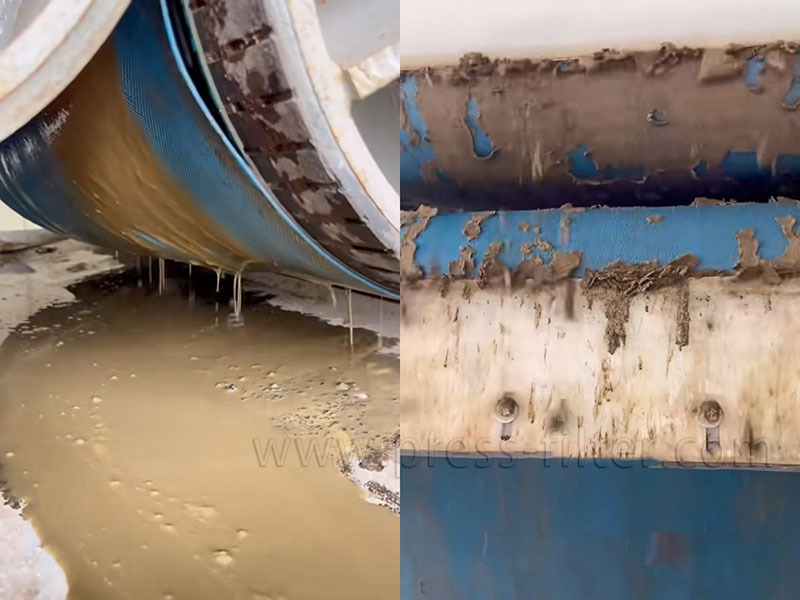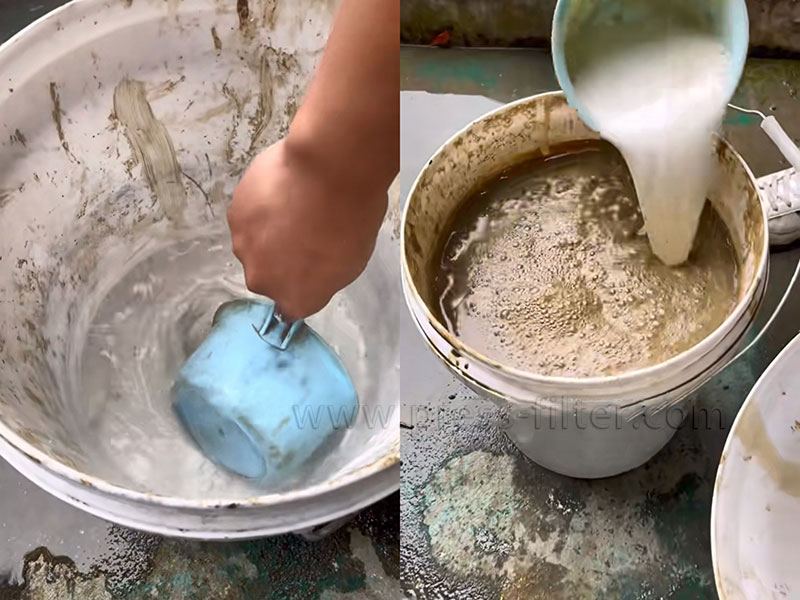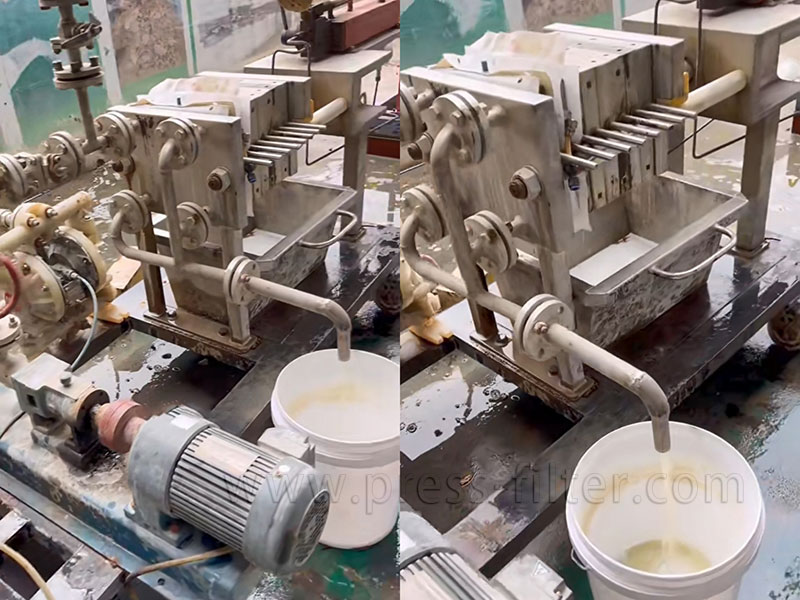Application of Filter Press in Sugar Residue Dehydration
In the dehydration of sugar residue, a filter press is a key equipment, that is used to separate the water in the sugar residue and increase the solid content of the waste residue. The commonly used belt filter and plate and frame stainless steel filter press can be used in combination to achieve the best dehydration effect and production efficiency. This combination can provide flexibility under different sugar residue characteristics and production processes to meet different processing requirements. The following will introduce the application of these two filter presses in sugar residue dehydration.
[article_recommend id=”5958″]
Specific Application Process of Filter Press
Sugar residue dehydration generally requires three steps. First, use a belt filter to preliminarily dehydrate the sugar residue. The filtrate after dehydration is collected for the second step. Add the dissolved lime and stir evenly. Finally, inject it into the plate and frame stainless steel filter press for further dehydration. The following are the detailed steps of dehydration.
Preliminary dehydration of belt filter press
Feeding and pressing: The sugar residue first enters the belt filter. The material moves slowly forward on the conveyor belt and is gradually pressed by two rollers. Most of the water in the sugar residue is squeezed out by gradually increasing the squeezing force.
Filtrate collection: The squeezed water (including sugar juice) flows into the collection tank or container to prepare for the next step of lime conditioning.
Lime conditioning sugar residue
Lime dissolution: Take an appropriate amount of lime powder (calcium oxide), add water, and stir until it is completely dissolved to form lime milk. The role of lime in sugar residue dehydration is mainly to adjust the pH value, which helps the subsequent solid-liquid separation.
Addition and mixing: Add the dissolved lime milk evenly to the filtrate discharged from the belt filter. The addition of lime can enhance the filterability of the material and help to more effectively separate the sugar residue and sugar juice during the plate and frame stainless steel filter pressing process. After the lime milk and the filtrate are fully mixed, the material is ready to enter the plate and frame stainless steel filter press.
Deep dehydration of plate and frame stainless steel filter press
Material storage: The lime-conditioned material is pumped into the filter chamber of the plate and frame stainless steel filter press. At this stage, the sugar residue has been preliminarily dehydrated by the belt filter and has good filtration performance after lime conditioning.
Starting the filter press: Turning on the plate and frame stainless steel filter press, the equipment further presses the sugar residue under high pressure, so that the sugar juice seeps out of the filter cloth. The high pressure of the plate and frame stainless steel filter press can greatly reduce the moisture content of the sugar residue and achieve the ideal dehydration effect.
Material residue output: After the filter press is completed, the plate and frame stainless steel filter press automatically opens and discharges the dried sugar residue, which can be used for feed or biomass fuel.
Advantages of Filter Press for Dehydrating Sugar Residue
Improve dehydration efficiency
The belt filter press can perform continuous preliminary dehydration, quickly remove most of the free water, reduce the moisture content of the material, and reduce the burden for subsequent processing.
The plate and frame stainless steel filter press apply higher pressure, which can further squeeze the sugar residue and reduce the moisture to a lower level. Therefore, the combined use greatly improves the overall dehydration efficiency and makes the final moisture content of the sugar residue lower.
Improve processing capacity and production efficiency
The continuous feeding and discharging characteristics of the belt filter press make it have a large processing capacity and are suitable for the initial dehydration of large-scale sugar residues. In terms of process, the belt filter press and the plate and frame stainless steel filter press are processed in steps, which improves the overall processing capacity and production efficiency.
This combination can achieve a larger processing capacity and is suitable for large-scale production scenarios such as sugar factories.
Improve filter cake quality and solid content
The plate and frame stainless steel filter press can obtain filter cakes with high solid content under high pressure, while the initial dehydration of the belt filter press improves the uniformity of the material.
The combined process makes the sugar residue filter cake drier and has a lower sugar content, which provides better quality for subsequent processing.
Conclusion
The advantage of this combined process is that it utilizes the continuous processing of the belt filter and the high-pressure dehydration characteristics of the plate and frame stainless steel filter press, which not only saves energy consumption but also improves the dehydration efficiency of the sugar residue. The combined use of the belt filter press and the plate and frame stainless steel filter press fully utilizes the advantages of both at different dehydration stages to achieve an efficient and energy-saving sugar residue dehydration process.




